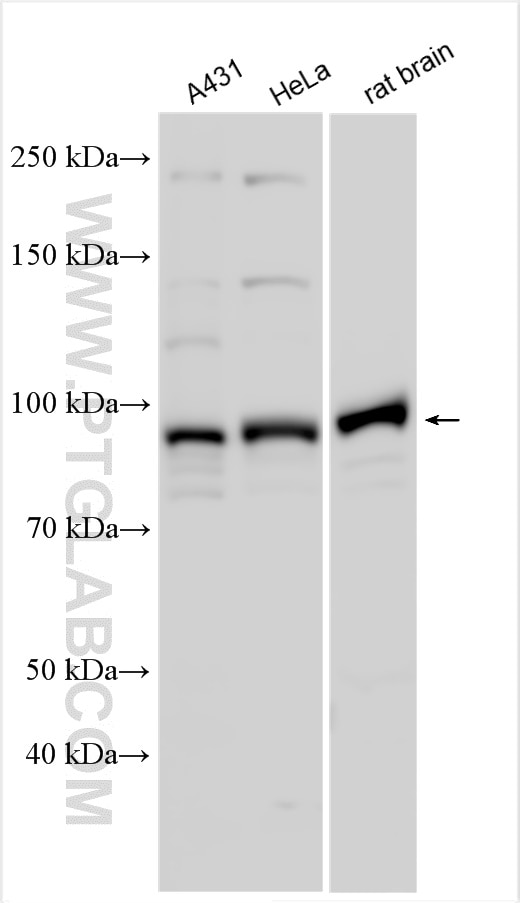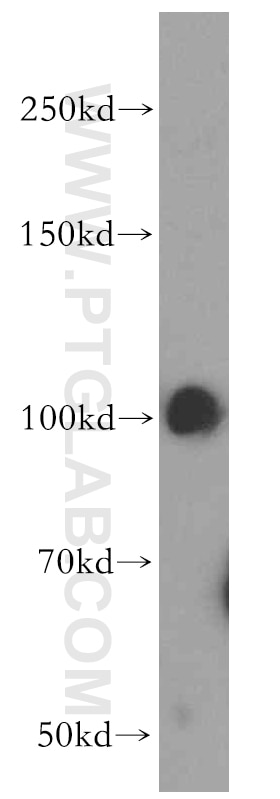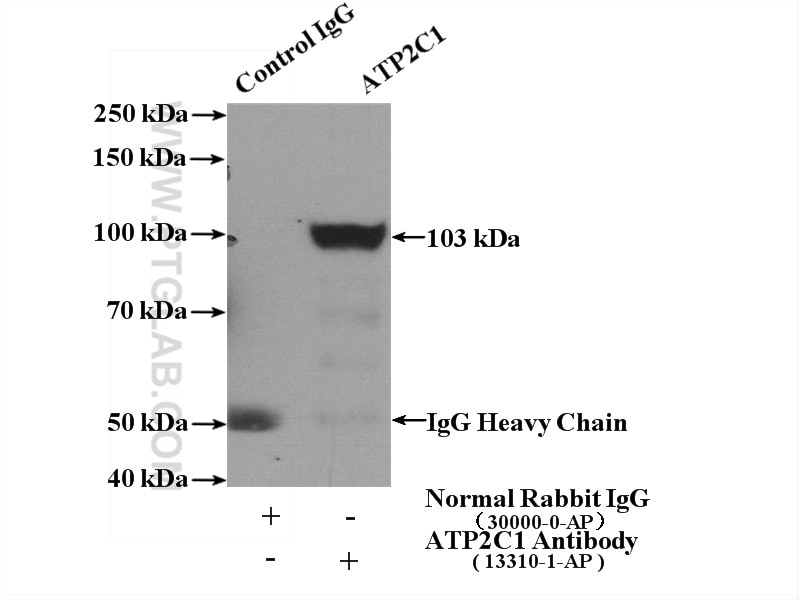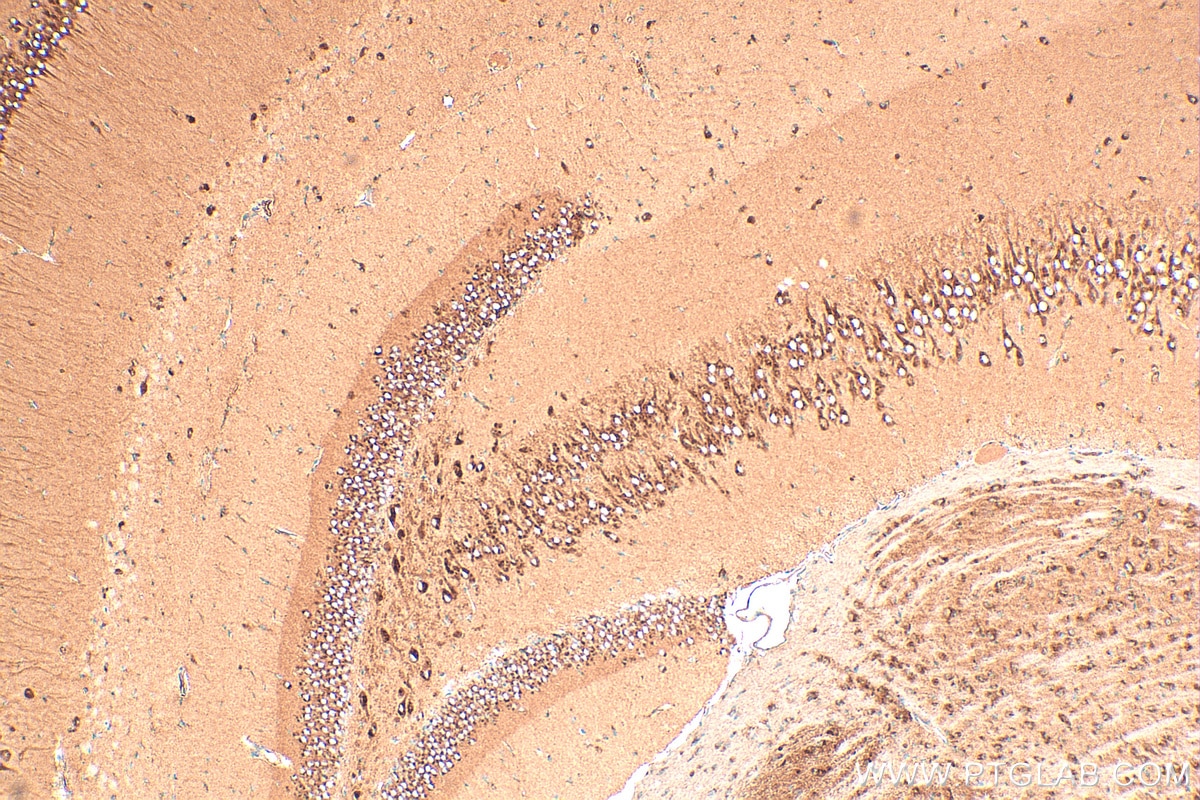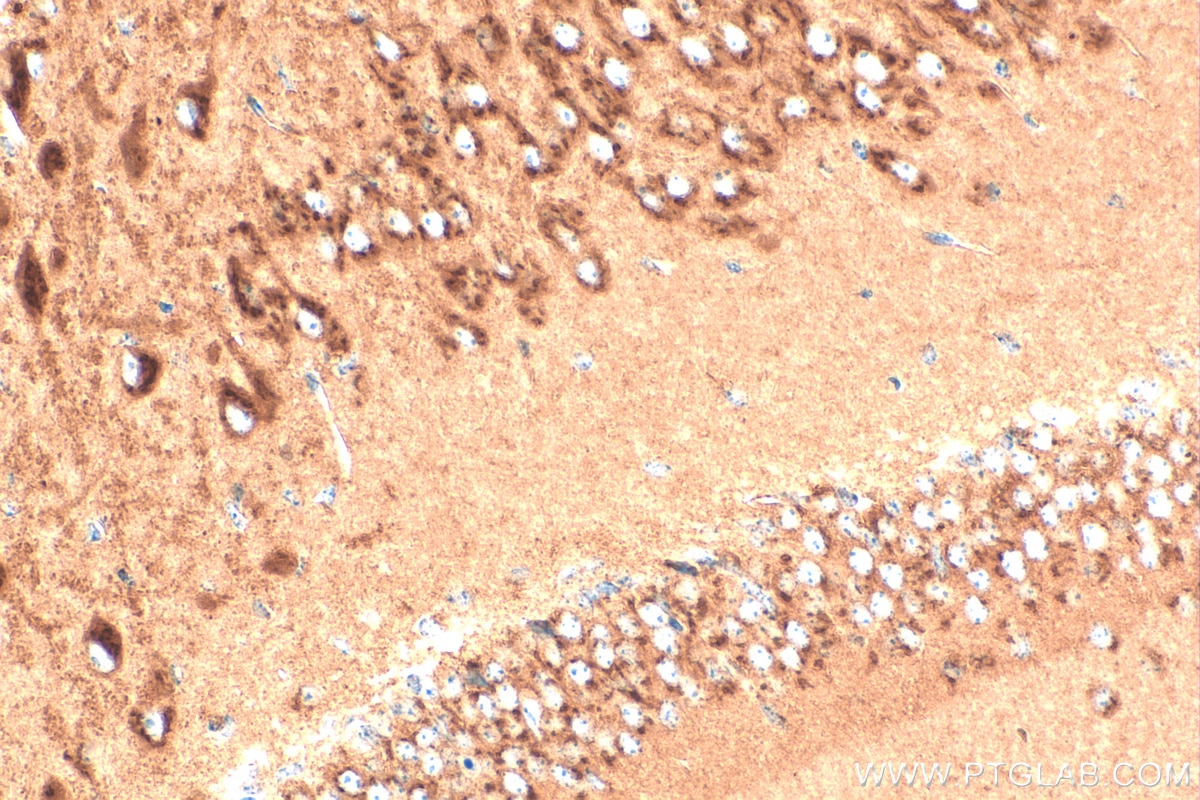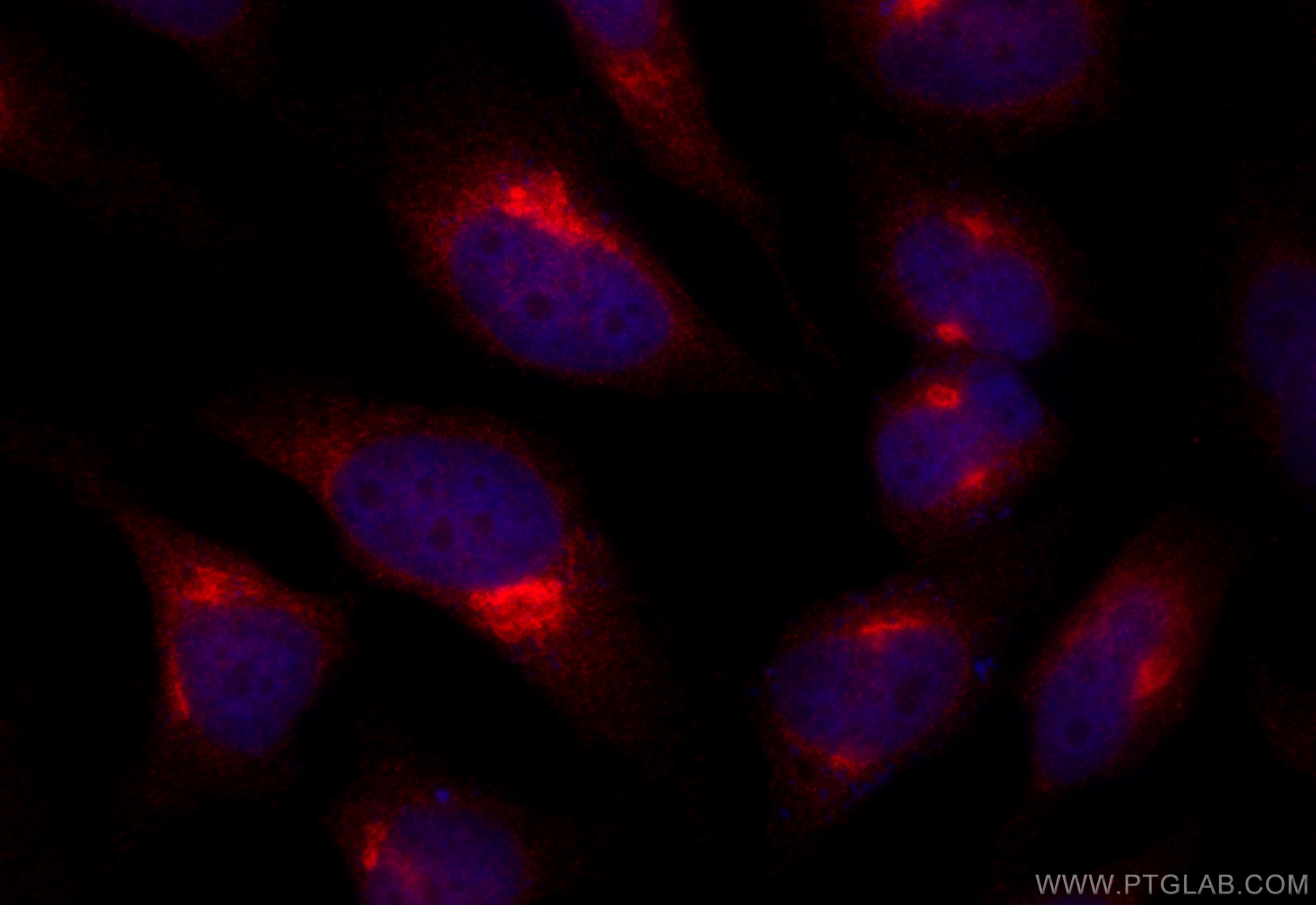Tested Applications
| Positive WB detected in | HeLa cells, A431 cells, human brain tissue, rat brain tissue, mouse brain tissue |
| Positive IP detected in | mouse kidney tissue |
| Positive IHC detected in | mouse brain tissue Note: suggested antigen retrieval with TE buffer pH 9.0; (*) Alternatively, antigen retrieval may be performed with citrate buffer pH 6.0 |
| Positive IF/ICC detected in | HeLa cells |
Recommended dilution
| Application | Dilution |
|---|---|
| Western Blot (WB) | WB : 1:1000-1:8000 |
| Immunoprecipitation (IP) | IP : 0.5-4.0 ug for 1.0-3.0 mg of total protein lysate |
| Immunohistochemistry (IHC) | IHC : 1:50-1:500 |
| Immunofluorescence (IF)/ICC | IF/ICC : 1:400-1:1600 |
| It is recommended that this reagent should be titrated in each testing system to obtain optimal results. | |
| Sample-dependent, Check data in validation data gallery. | |
Published Applications
| WB | See 6 publications below |
| IF | See 2 publications below |
Product Information
13310-1-AP targets ATP2C1 in WB, IHC, IF/ICC, IP, ELISA applications and shows reactivity with human, mouse, rat samples.
| Tested Reactivity | human, mouse, rat |
| Cited Reactivity | human, mouse, rat |
| Host / Isotype | Rabbit / IgG |
| Class | Polyclonal |
| Type | Antibody |
| Immunogen |
CatNo: Ag4143 Product name: Recombinant human ATP2C1 protein Source: e coli.-derived, PGEX-4T Tag: GST Domain: 320-654 aa of BC028139 Sequence: LGVMRMVKKRAIVKKLPIVETLGCCNVICSDKTGTLTKNEMTVTHIFTSDGLHAEVTGVGYNQFGEVIVDGDVVHGFYNPAVSRIVEAGCVCNDAVIRNNTLMGKPTEGALIALAMKMGLDGLQQDYIRKAEYPFSSEQKWMAVKCVHRTQQDRPEICFMKGAYEQVIKYCTTYQSKGQTLTLTQQQRDVYQQEKARMGSAGLRVLALASGPELGQLTFLGLVGIIDPPRTGVKEAVTTLIASGVSIKMITGDSQETAVAIASRLGLYSKTSQSVSGEEIDAMDVQQLSQIVPKVAVFYRASPRHKMKIIKSLQKNGSVVAMTGDGVNDAVALKA Predict reactive species |
| Full Name | ATPase, Ca++ transporting, type 2C, member 1 |
| Calculated Molecular Weight | 919 aa, 101 kDa |
| Observed Molecular Weight | 95-103 kDa |
| GenBank Accession Number | BC028139 |
| Gene Symbol | ATP2C1 |
| Gene ID (NCBI) | 27032 |
| RRID | AB_10640808 |
| Conjugate | Unconjugated |
| Form | Liquid |
| Purification Method | Antigen affinity purification |
| UNIPROT ID | P98194 |
| Storage Buffer | PBS with 0.02% sodium azide and 50% glycerol, pH 7.3. |
| Storage Conditions | Store at -20°C. Stable for one year after shipment. Aliquoting is unnecessary for -20oC storage. 20ul sizes contain 0.1% BSA. |
Background Information
ATP2C1, also known as hSPCA1, belongs to the family of P-type cation transport ATPases. ATP2C1 is a Golgi-localized ATPase that mediates Golgi uptake of cytosolic Ca(2+) and Mg(2+) and has a role in regulating Ca(2+) and Mn(2+) cellular content (PMID: 11741891). ATP2C1 is found in most tissues except colon, thymus, spleen, and leukocytes. It is expressed in keratinocytes (PMID: 15831496, 14632183). Defects in ATP2C1 cause Hailey-Hailey disease (HHD)(PMID: 10615129, 28035777).
Protocols
| Product Specific Protocols | |
|---|---|
| IF protocol for ATP2C1 antibody 13310-1-AP | Download protocol |
| IHC protocol for ATP2C1 antibody 13310-1-AP | Download protocol |
| IP protocol for ATP2C1 antibody 13310-1-AP | Download protocol |
| WB protocol for ATP2C1 antibody 13310-1-AP | Download protocol |
| Standard Protocols | |
|---|---|
| Click here to view our Standard Protocols |
Publications
| Species | Application | Title |
|---|---|---|
J Clin Invest Chromosomal 3q amplicon encodes essential regulators of secretory vesicles that drive secretory addiction in cancer | ||
Front Cell Dev Biol A Negative Feedback Loop in Ultraviolet A-Induced Senescence in Human Dermal Fibroblasts Formed by SPCA1 and MAPK. | ||
Clin Cosmet Investig Dermatol The Pathogenic Mechanism of the ATP2C1 p.Ala109_Gln120del Mutation in Hailey-Hailey Disease | ||
BMC Pulm Med Tetramethylpyrazine ameliorates endotoxin-induced acute lung injury by relieving Golgi stress via the Nrf2/HO-1 signaling pathway | ||
Zhong Nan Da Xue Xue Bao Yi Xue Ban Ultrashort wave alleviates oxygen-glucose deprivation/reoxygenation injury via up-regulation of SPCA1 expression in N2a cells | ||
PLoS One Chemigenetic Ca2+ indicators report elevated Ca2+ levels in endothelial Weibel-Palade bodies |
Reviews
The reviews below have been submitted by verified Proteintech customers who received an incentive for providing their feedback.
FH Boyan (Verified Customer) (09-12-2019) | This antibody could detect endogenous ATP2C1 both for WB and IF. For WB, besides the band at the expected molecular weight, it also gives a non specific band at ~ 150 kd.
|



